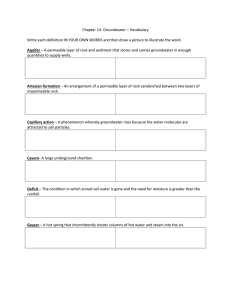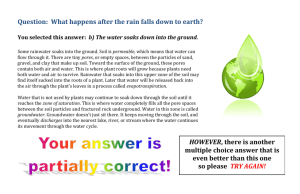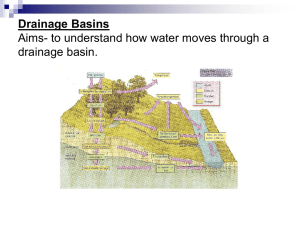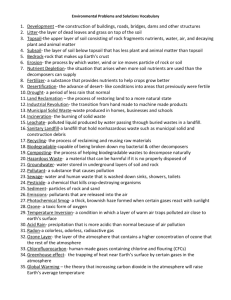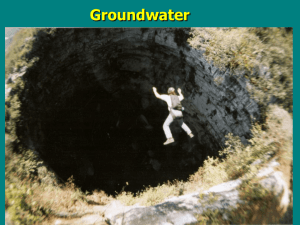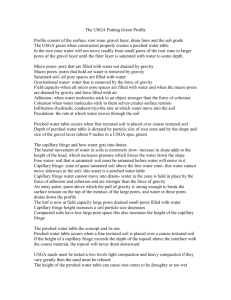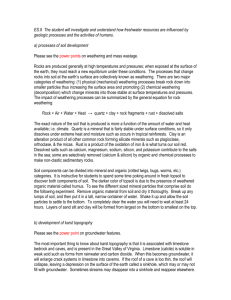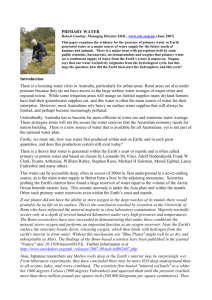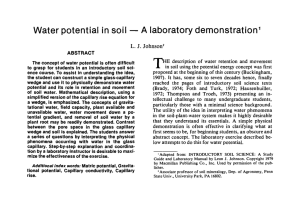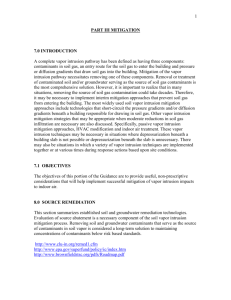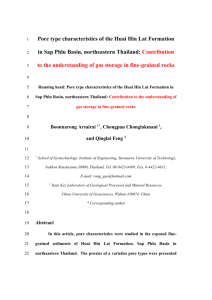Ground Water-W
advertisement
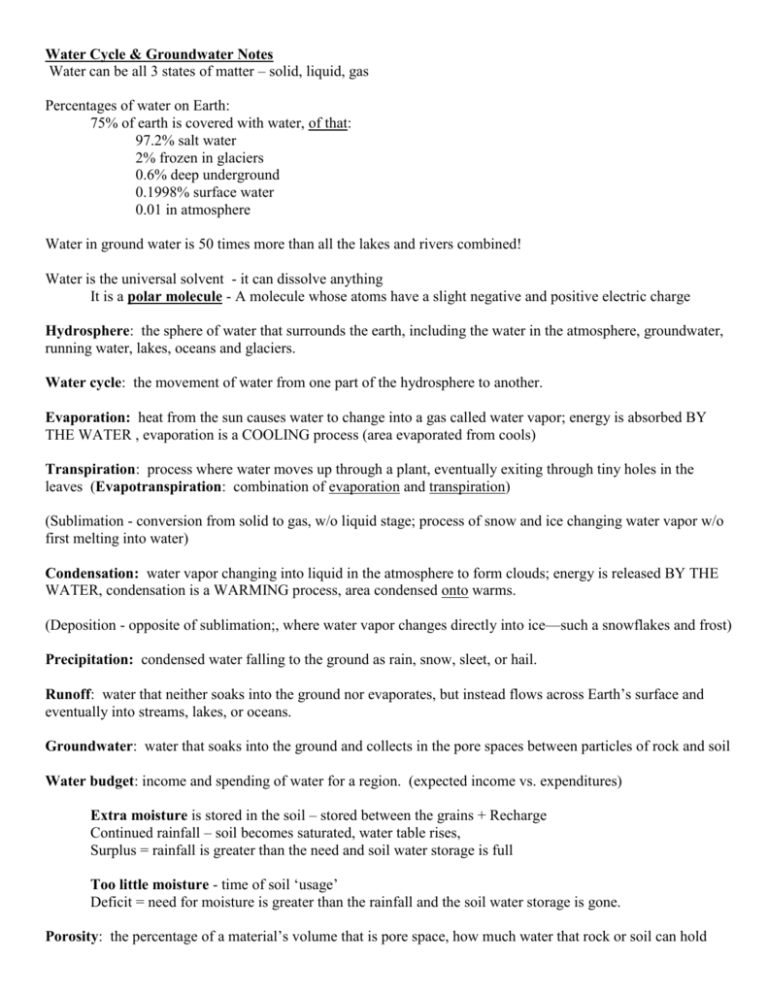
Water Cycle & Groundwater Notes Water can be all 3 states of matter – solid, liquid, gas Percentages of water on Earth: 75% of earth is covered with water, of that: 97.2% salt water 2% frozen in glaciers 0.6% deep underground 0.1998% surface water 0.01 in atmosphere Water in ground water is 50 times more than all the lakes and rivers combined! Water is the universal solvent - it can dissolve anything It is a polar molecule - A molecule whose atoms have a slight negative and positive electric charge Hydrosphere: the sphere of water that surrounds the earth, including the water in the atmosphere, groundwater, running water, lakes, oceans and glaciers. Water cycle: the movement of water from one part of the hydrosphere to another. Evaporation: heat from the sun causes water to change into a gas called water vapor; energy is absorbed BY THE WATER , evaporation is a COOLING process (area evaporated from cools) Transpiration: process where water moves up through a plant, eventually exiting through tiny holes in the leaves (Evapotranspiration: combination of evaporation and transpiration) (Sublimation - conversion from solid to gas, w/o liquid stage; process of snow and ice changing water vapor w/o first melting into water) Condensation: water vapor changing into liquid in the atmosphere to form clouds; energy is released BY THE WATER, condensation is a WARMING process, area condensed onto warms. (Deposition - opposite of sublimation;, where water vapor changes directly into ice—such a snowflakes and frost) Precipitation: condensed water falling to the ground as rain, snow, sleet, or hail. Runoff: water that neither soaks into the ground nor evaporates, but instead flows across Earth’s surface and eventually into streams, lakes, or oceans. Groundwater: water that soaks into the ground and collects in the pore spaces between particles of rock and soil Water budget: income and spending of water for a region. (expected income vs. expenditures) Extra moisture is stored in the soil – stored between the grains + Recharge Continued rainfall – soil becomes saturated, water table rises, Surplus = rainfall is greater than the need and soil water storage is full Too little moisture - time of soil ‘usage’ Deficit = need for moisture is greater than the rainfall and the soil water storage is gone. Porosity: the percentage of a material’s volume that is pore space, how much water that rock or soil can hold Permeable: describes rock or soil that has connecting pores that allow water to pass through easily Capillary: rate at which water is pulled upward from the water table into pore spaces by capillary action (the larger the pore space the poorer the capillary action) Impermeable: rock or soil that has very small pores, preventing water from passing through Aquifer: layer of permeable rock that has connecting pores and transmits water freely Zone of Saturation: area where all the pores in a rock are completely filled with water, usually near the ground surface Zone of Aeration: area where the pores are filled with air, usually near the ground surface Water Table: top of the zone of saturation Artesian Well: well in which water under natural pressure rises to the surface without being pumped Spring: point at which that water table meets Earth’s surface, causing water to flow from the ground Hot spring: spring of warm groundwater, caused when the water is heated by rocks that contact magma under Earth’s surface Geyser: hot spring of groundwater that erupts periodically, shooting water and steam into the air Cave: large underground opening formed when groundwater gradually dissolves rock Karst Topography: regions characterized by sins, sinkhole ponds, lost rivers and underground drainage.
